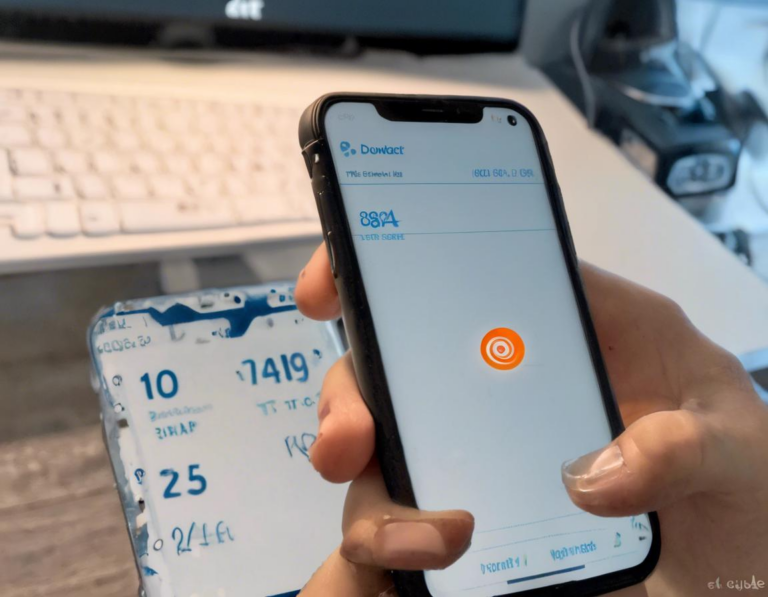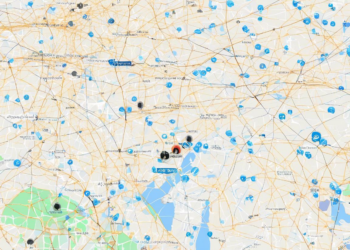Using Downdetector to Check AT&T Outages: A User Guide

AT&T is one of the largest telecommunications companies in the United States, providing services to millions of customers. Like any complex network, AT&T can experience outages, impacting internet, mobile, and TV services. If you’re experiencing issues with your AT&T services, it’s important to know how to check for outages and get help. One helpful tool for this is Downdetector, a real-time outage monitoring platform. This guide will walk you through how to use Downdetector to check for AT&T outages, understand what the data means, and find other resources to help resolve the issue.
Understanding Downdetector
Downdetector is a website and app that aggregates real-time outage reports from users across various services, including internet providers, mobile carriers, and streaming platforms. It provides a visual representation of outage reports in a particular area, showing the number of users experiencing problems and the types of issues they’re facing.
Why Use Downdetector for AT&T Outages?
Downdetector is a valuable tool for checking AT&T outages because it offers several advantages:
- Real-Time Updates: Downdetector provides up-to-the-minute information about reported outages, allowing you to see if other users in your area are experiencing similar issues.
- Easy-to-Use Interface: Downdetector’s website and app are intuitive and user-friendly, making it easy to find the information you need quickly.
- Visual Representation: The platform uses interactive maps and charts to visually represent outage reports, providing a clear understanding of the affected area and the severity of the issue.
- Confirmation of Outage: Downdetector can confirm whether an issue you’re experiencing is widespread or localized, helping you determine if it’s an AT&T problem or a local issue.
How to Use Downdetector for AT&T Outages
Using Downdetector to check for AT&T outages is a straightforward process:
- Visit the Downdetector Website: Navigate to the Downdetector website: https://downdetector.com/
- Search for AT&T: In the search bar, type “AT&T” and press enter.
- Explore the Outage Map: A map will appear showing the reported outage locations in real-time. The darker the color on the map, the more users are reporting problems in that area.
- View Outage Reports: Click on any location on the map to see a timeline of reported outages, the most common issues reported by users, and the current status of the outage.
- Check for Service-Specific Issues: Downdetector allows you to filter outages by service type (internet, mobile, TV). You can filter by specific services like U-verse, AT&T Fiber, or AT&T Wireless.
Interpreting Downdetector Data
Understanding what the data on Downdetector means is essential for making informed decisions about your AT&T services:
- Number of Reports: The higher the number of reported outages, the more likely a widespread issue is affecting the service.
- Common Issues: The most common issues reported by users can give you an idea of the nature of the outage, whether it’s internet connectivity, mobile service, or TV service disruptions.
- Outage Timeline: The timeline shows how long the outage has been ongoing and whether it’s getting better or worse.
What to Do If Downdetector Shows an AT&T Outage
If Downdetector confirms an AT&T outage, here are some steps you can take:
- Check Your Own Equipment: Even if a widespread outage is occurring, it’s always a good idea to check your own equipment to rule out any local issues. Restart your modem and router, and ensure all cables are securely connected.
- Contact AT&T Customer Support: The next step is to contact AT&T customer support to report the outage and get an estimated time of resolution.
- Follow AT&T’s Social Media Channels: AT&T often uses social media platforms like Twitter to announce outages and provide updates. Follow their official accounts for the latest information.
- Use Alternative Connectivity: If you’re experiencing an internet outage, consider using alternative methods like mobile hotspots, public Wi-Fi, or a neighbor’s internet connection until AT&T resolves the issue.
Other Resources for AT&T Outage Information
While Downdetector is a great resource, other channels can provide helpful information about AT&T outages:
- AT&T Outage Map: AT&T has its own outage map available on its website, which provides specific details about planned maintenance, service disruptions, and estimated restoration times.
- Social Media: Many customers and online communities share information about outages and their experiences. Checking platforms like Twitter, Reddit, and Facebook can provide real-time updates and insights.
- Local News: Local news outlets often report on major service disruptions, including internet and mobile outages.
Tips for Avoiding AT&T Outages
While outages are sometimes unavoidable, there are steps you can take to minimize their impact:
- Keep Your Equipment Up-to-Date: Update your modem and router firmware regularly to ensure they are compatible with the latest network configurations.
- Regular Maintenance: Schedule regular maintenance checks on your equipment to prevent potential issues that could cause disruptions.
- Backup Internet: Consider having a backup internet connection, like a mobile hotspot or a second internet provider, to ensure uninterrupted access in case of an outage.
- Contact AT&T for Support: If you experience any issues with your AT&T services, don’t hesitate to reach out to their customer support team for assistance.
Conclusion
Downdetector is a valuable tool for checking AT&T outages, providing real-time updates and insights into the impact of service disruptions. By using Downdetector and other resources, you can stay informed about outages, troubleshoot issues, and get help resolving problems quickly. Remember to keep your equipment up-to-date, check your own connections, and contact AT&T customer support for any unresolved issues. With the right information and resources, you can minimize the disruption caused by AT&T outages and stay connected.












